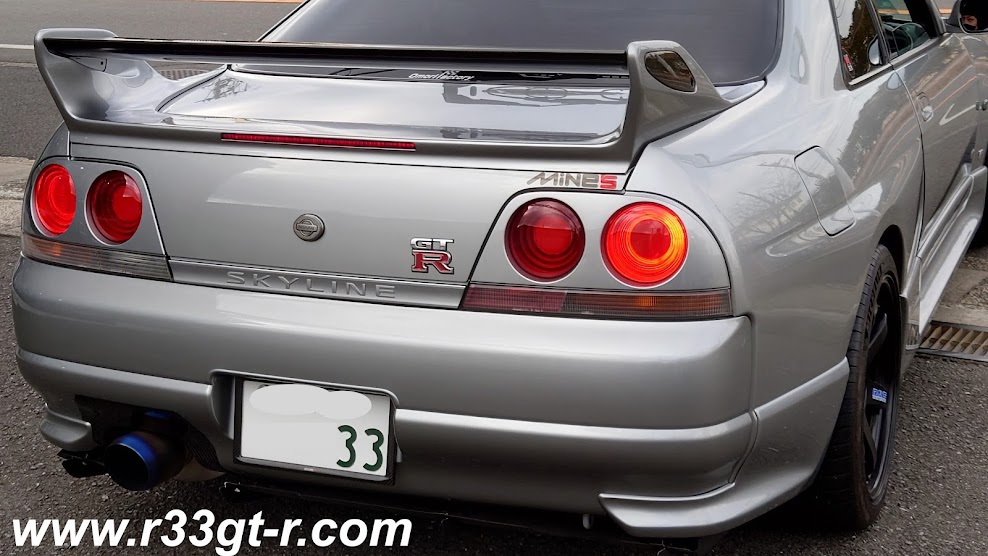I was looking at Nick's new website (see previous post) and it occurred to me that, while my engine is NEAR Mine's Stage 1, what EXACTLY am I missing?
Actually, it turns out only three things: 1) the N1 block, 2) the PBB valve guides, and 3) the lightened crankshaft. So what effect will not having these items have on my engine?
Recall that I told Nakayama-san that I would spend 80% on the street, and 20% on the track, and that I wanted about 500ps. The engine thus has to be durable and flexible for street use, but also powerful enough for the occasional track day.
N1 Block:
The N1 block differs from the regular block not in the materials used to make the block, but in the cooling channels around each cylinder sleeve. In the N1 block, the channels are a bit wider. That's it. The normal block is good for about (conservatively) 600 ps, which I will not have, so not that big of an issue for me. N1 block alone costs about 120,000 yen. If I decide I want to spend more money on the car for even more horsepower, I will think about lightening the car. Plus, I think I need better brakes first, as well as structural rigidity improvements, plus new alloy wheels, plus a Robson Leather interior... the wish list goes on.
PBB Valve Guides:
I did some research on the web, and it appeared that PBB is a lead alloy which, when used as valve guides, gives more durability and at higher engine revs. Some sites claim that, due to this increased durability, modern automakers are now putting this into their production engines. Nakayama-san agreed with this - except that he claims Japanese engine makers do not use PBB, it's mostly a European thing - so then I asked him, how much do the Stage 2 engines rev, and how much will my engine be able to rev. Stage 2 - up to 8500 rpm safely, and my engine, up to 8000 rpm safely. In other words, only a 500 rpm difference. And, as he pointed out, the car's power will peak before 8000 rpm, so as long as I don't overrev, I should be safe (I am pretty sure I have learned my lesson). He noted that one weakness in the RB26 engines was revving between the 8000 and 8500 rpm threshold.
Lightened Crankshaft:
Common sense says that the lightened crankshaft will improve engine response. It does, but one drawback is that, with reduced mass, the lightened crankshaft is weaker. Most of the difference in improved engine response comes from lightened pistons and conrods, which I have, so again, not necessary for me.
Everything else is the same as the Stage 1 engine as listed on their website, with two important changes that are not listed. Different Mine's cams, and a better oil pump than the N1 I was going to get originally.
Super Camshaft Shore Pro II:
When Mine's developed their Nur car, they found that they could get better lower and mid range response by sticking in cams with a 252 degree and 10.05 lift (for both in/ex) profile than they could with their previous arrangement. This new product is unique to Mine's, and is called the Super Camshaft Shore Pro II.

This is what it looks like - much like most other cams.
Nismo Oil Pump:
And, while I was content for awhile with the N1 oil pump, after doing some research I learned that the N1 oil pump was only marginally stronger and provided marginal better oil flow than the stock pump - the Nismo oil pump (btw Nakayama-san said that the HKS and the Reimax pumps were made by the same manufacturer and were the same) has strengthened internals - which should allow it to survive an overrev better than the stock or N1 unit. The Tomei, HKS, JUN and other pumps also have higher capacity, essentially doubling the oil capacity of the engine. I think it's overkill, and further, adds weight to the car, so I passed on the other pumps.

Nismo Intake Plenum:
Oh, and I also ordered the Nismo plenum (surge tank), as it has very noticeable affect on low and midrange torque. Modern day computer simulations were used to help design this plenum - such computer analysis was not available when the RB was first designed, so Nakayama-san said that the original plenum, while ok for its day, has its limits. One that is well known is how the #6 cylinder runs lean compared to the other cylinders.
This is what it looks like:

Lastly, my car should be ready to go by September 25... one more month! (any earlier - a week or two doesn't matter, as I will be out of the country first on a business trip and then on vacation).
Argghh - forgot to ask two questions:
1) the "twin turbo" pipe - I have seen vendors split that and claim better exhaust gas flow. True or false? (edit: 10/17 - MINE'S doesn't use this on their demo cars. Some cars they work on use the hard pipe kit, though)

2) confirm that my engine will be mounted on the Nismo strengthened engine mounts. (edit - 10/17 - yes)
Argghh again - also forgot to ask him to remove the Nismo oil separator on the old engine and install on new one... (edit: 10/17 - Nakayama-san said no problem)

Argghh again, again - forgot to ask about trading in an old ECU for the new one...(edit: 10/17 - as mine is currently a Tomei Powered - they will try to swap for standard ECU, which they can then reprogram).
another - forgot to ask about engine mounts. and low temp thermostat (edit: 10/17 - was told later that engine will have the stronger Nismo mounts, and yes the low temp thermostat).

No comments:
Post a Comment